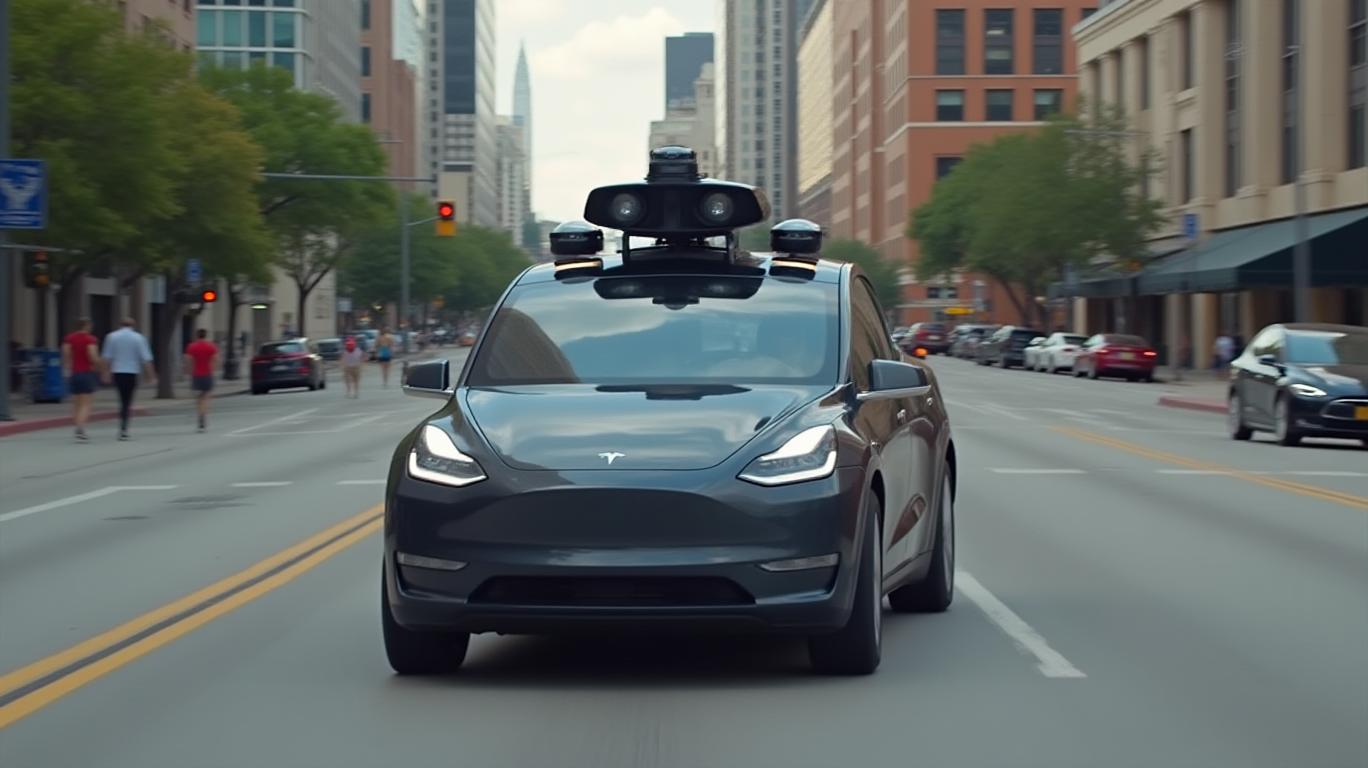Tesla's Autonomous Revolution: Why the 2025 Robotaxi Launch is a Game-Changer
Tesla's upcoming Robotaxi launch on June 12, 2025, marks a pivotal moment in the race to dominate autonomous transportation. This is not merely a product launch—it's a strategic move to redefine mobility, disrupt ride-sharing giants like Uber and Lyft, and establish
as the undisputed leader in autonomous vehicle technology. Here's why investors should pay close attention.
The Strategic Play: Camera-Only Tech and Scalability
Tesla's Robotaxi fleet will initially deploy 10 Model Y vehicles in Austin, but its true power lies in its camera-only autonomy system. Unlike competitors like Waymo, which rely on costly lidar sensors, Tesla's approach mirrors human vision—using AI to interpret camera data. This reduces hardware costs and enables every Tesla vehicle to become a potential robotaxi with a software update.
The implications are staggering. With over 4 million Teslas on the road globally, Tesla can rapidly scale its autonomous fleet by retrofitting existing cars. By contrast, Waymo must build its fleet from scratch. This gives Tesla an insurmountable cost advantage, enabling it to undercut rivals on pricing and dominate ride-hailing markets.
Market Dominance: From Austin to the World
The Austin pilot is just the first step. Musk has stated that Tesla aims to expand the fleet to 1,000 vehicles within months, with plans to roll out to San Francisco, Los Angeles, and beyond. The goal? To capture “90-something percent” of the rideshare market by leveraging its existing vehicle base.
The Cybercab—a purpose-built autonomous vehicle without steering wheels or pedals—will further solidify Tesla's lead. Currently in advanced testing, this model is designed for mass production in 2026 using Tesla's “unboxed” manufacturing method, which streamlines assembly and slashes costs.
Outthinking the Competition
Waymo's 1,500 robotaxis and 200,000 weekly rides may seem daunting, but Tesla's strategy is a Trojan horse. While Waymo invests in expensive sensors and city-specific maps, Tesla's AI can learn from every Tesla on the road, creating a network effect that improves safety and efficiency globally.
Moreover, Tesla's owner revenue-sharing model—allowing drivers to loan their cars to the Robotaxi fleet—turns customers into investors. This creates a sticky ecosystem where Tesla owners have a direct financial incentive to adopt the service, accelerating adoption.
Regulatory Hurdles? Tesla is Already Ahead
Critics cite regulatory risks, but Tesla has anticipated them. The Austin launch will be geofenced to controlled areas, with remote human monitoring to ensure safety. This cautious rollout builds trust with regulators and the public. Musk's “paranoid” approach—prioritizing gradual scaling—minimizes backlash while proving reliability.
Even skeptics must acknowledge progress: Tesla's FSD system has already achieved lower accident rates than U.S. averages, according to internal data. While NHTSA scrutiny remains, Tesla's transparency and rapid iteration (over 100 software updates annually) position it to meet safety standards faster than rivals.
Why Investors Should Act Now
Tesla's Robotaxi launch is a binary event. Success in Austin could trigger a domino effect, as cities rush to partner with the only company capable of deploying autonomous fleets at scale. Here's what investors stand to gain:
- Market Leadership: Tesla's first-mover advantage in software-driven autonomy could lock out competitors like Waymo.
- Revenue Diversification: Robotaxi services add a recurring revenue stream, reducing reliance on car sales.
- Valuation Upside: A successful rollout could re-rate Tesla's stock, reflecting its $1 trillion+ autonomous mobility potential.
The Bottom Line: Tesla is Building the Future of Transportation
The June 12, 2025, launch is Tesla's Sputnik moment—a bold declaration that autonomous vehicles are no longer science fiction. With a cost-effective tech stack, a massive installed base, and Elon Musk's relentless vision, Tesla is poised to reshape urban mobility.
For investors, the opportunity is clear: Tesla's Robotaxi is not just a product—it's a platform for dominance. Those who bet on Tesla now will be positioned to ride the wave of the next trillion-dollar industry.
Act fast. The autonomous revolution is here—and Tesla is driving it.

Comments
No comments yet